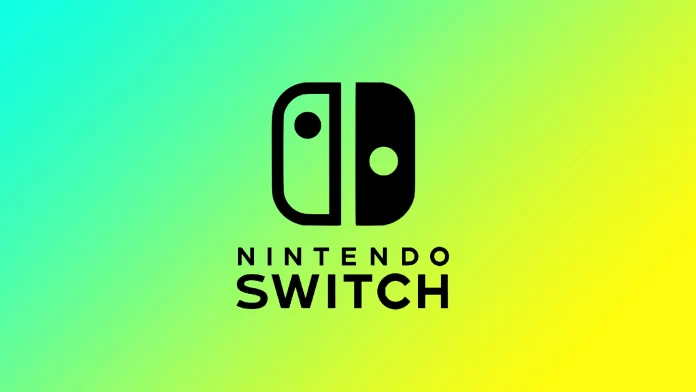The Nintendo Switch has taken the gaming world by storm since its release in 2017, offering a unique hybrid console experience that can be enjoyed at home and on the go. With its innovative design and impressive game library, it’s no wonder that fans of the Nintendo Switch often wonder if the console comes equipped with a camera. Let’s find out if the Nintendo Switch has a camera and what it’s for.
What is the camera in Nintendo Switch for
While you won’t notice the camera lens on the front or back of the Nintendo Switch console, there is one-two – hiding on the Joycon controllers. Each motion-sensitive controller has an infrared (IR) camera on the bottom. It doesn’t look like a camera. Again, it’s not a traditional lens, but you’ll notice it by the black spots on the bottom.
These cameras were not often used when the Switch was first released, but Nintendo’s Labo cardboard kits made the camera and its capabilities clearer. An infrared sensor or camera works as if capturing invisible dots, which are then displayed on the subject of the hit. This isn’t far from how sonar works. This allows Joycon controllers to “see” objects and motion and use them as input.
The Nintendo 1-2-Switch game uses this camera to detect motion in one of the minigames. The image detection is probably much better than you would expect. However, it’s not high quality or has a perfect camera. You also currently can’t access the IR camera part of the camera without the Labo kit, and even then, it doesn’t work as a regular camera.
Although Nintendo has demonstrated a cardboard-style camera, you can’t buy one. That may come in the future. You can’t yet point the Joycon remote at any image and take a picture. When Labo was first released, Nintendo detailed Joycon’s technical skills and showed what the camera saw. The IR sensor can also detect a heat map.
Nintendo has detailed some details about the IR motion camera on its website, though this interview is for developers.
What games use infrared motion cameras in Joy-Con?
While the Nintendo Switch’s infrared motion camera on the right Joy-Con primarily serves as a gaming input device, developers have found creative ways to incorporate it into various games. Here are a few examples of games that utilize the infrared motion camera:
- 1-2-Switch: This party game, specifically designed to showcase the unique features of the Nintendo Switch, includes various mini-games that use the Joy-Con controllers’ capabilities. One of the games, “Ball Count,” relies on the infrared motion camera to detect and count the number of balls inside a virtual box as players physically move the Joy-Con.
- Super Mario Party: In this popular multiplayer game, players can participate in a mode called “Sound Stage,” using the infrared motion camera to compete in rhythm-based challenges. By following the on-screen prompts and utilizing the motion-sensing capabilities of the Joy-Con, players can complete various tasks and aim for high scores.
- Nintendo Labo: While not a specific game, the Nintendo Labo series of DIY kits allows players to build interactive cardboard creations and play games with them. Some Labo kits, such as the Toy-Con Piano and the Toy-Con House, use the infrared motion camera to detect specific inputs or actions, enhancing the overall gameplay experience.
- Fitness Boxing: This fitness-oriented game utilizes the infrared motion camera to track players’ movements following on-screen boxing routines. By holding a Joy-Con in each hand, players can throw punches and perform various boxing moves detected by the infrared camera, allowing for an immersive and engaging workout experience.
- Arms: Although not directly utilizing the infrared motion camera, the game Arms uses motion controls extensively. By holding the Joy-Con controllers, players can physically throw punches and control the extendable arms of their in-game characters. The Joy-Con’s gyroscopic sensors and accelerometers work with the infrared camera to translate real-world movements into the game.
It’s worth noting that while the infrared motion camera adds an extra layer of interactivity to these games, its primary purpose is for motion detection rather than capturing images. Nonetheless, these games demonstrate the versatility of the Nintendo Switch’s Joy-Con controllers and their ability to enhance gameplay experiences through motion-based input.
How to take a screenshot via Nintendo Switch
It may not be a camera in the traditional sense, but the switcher can take screenshots of everything that happens on the screen, both during the game and in the menu system.
Press the camera button on the left Joycon controller to take a screenshot. This will instantly save a capture of what is shown on the screen. The button is indicated by a square with a circle inside under the D-pad.
To see screenshots, you’re taken to the system menu:
- On the main menu screen with a horizontal view of the games, go down to circle the icons in the bottom row
- The photo album icon is a blue rectangle with a tree outline pointing to an image
- Clicking on this icon will display your photo album
- You can then view, delete or filter your screenshots
A microSD card slot is on the back of the switch console under the cradle. By default, the Switch will not display images or videos that aren’t screenshots of the Switch itself.
MicroSD cards can store downloaded games or upload screenshots you take on the console. It’s unclear why this functionality is so limited, but it’s nailed down. Even if you rename the JPG image to Nintendo’s custom screenshot format, it won’t fool the system.




